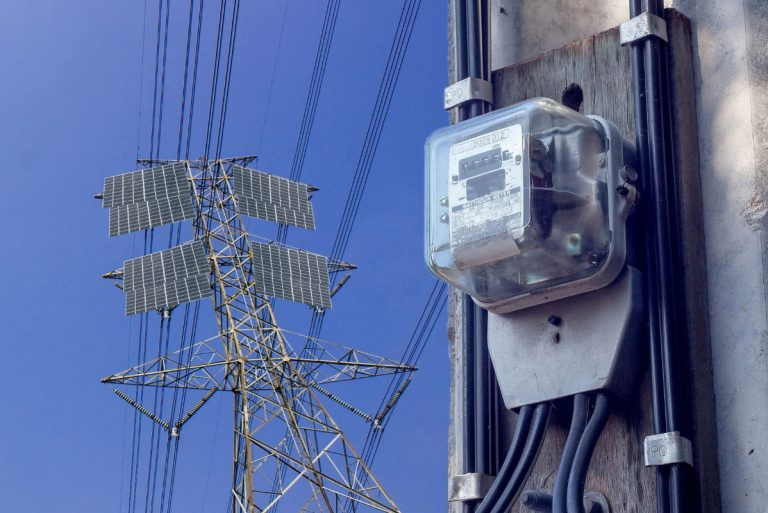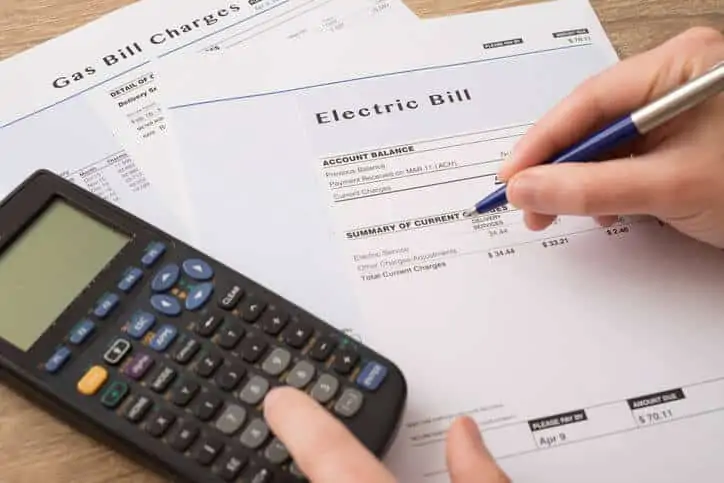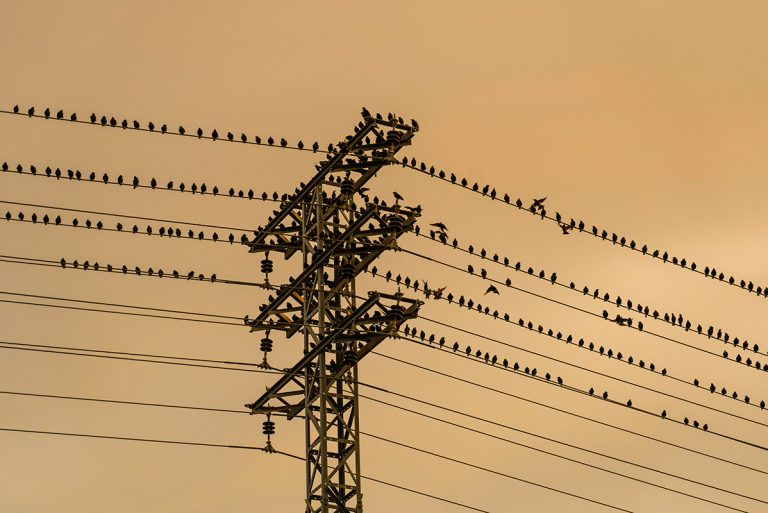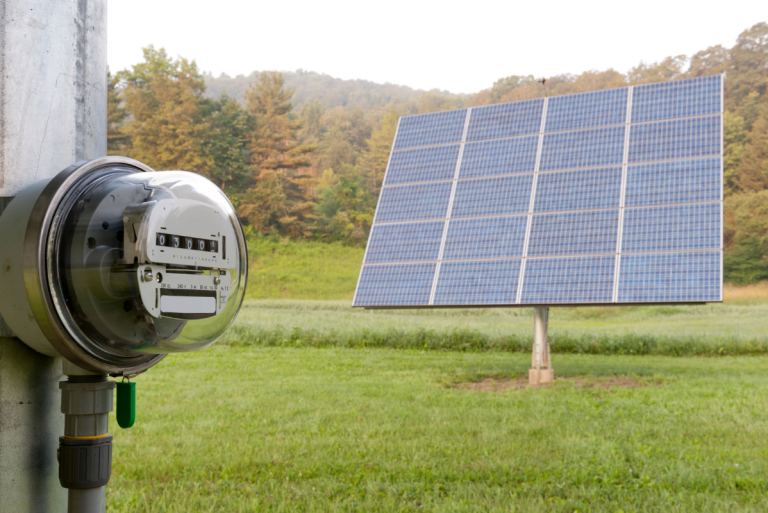The average U.S. household utilizes several devices, appliances, and lighting sources daily. And with the rise of work-from-home and remote work models, many homeowners have found their electricity bills skyrocketing as they spend more time at home.
These increased costs are no surprise: heating and cooling represent 47.7% of the energy we use in our home, followed by appliances, electronics, and lighting at 34.6%. To make matters worse, a large amount of home electricity usage comes from idle devices.
For those that are looking to reduce their energy usage and cut costs on spending, prepaid electricity can be a great way to do so. You can even opt for free electricity on nights and weekends with some plans.
However, you must weigh a few critical considerations before signing a contract for a prepaid electricity plan. This guide will highlight everything you should know about prepaid electricity.
What is prepaid electricity?
Prepaid electricity is an electric plan that allows customers to control electricity use by paying before using electricity. Due to their deregulation laws, these plans are available in states like Texas and Maryland.
This pay method encourages customers to opt for a more mindful utilization of energy, and move towards using more efficient electronic equipment at home or in the office, consequently avoiding power waste.

It poses a win-win perspective for both consumers and utilities. On the one hand, it allows users to keep track of energy consumption and enables low-income families to access this precious utility.
For utilities, prepaid electricity potentially reduces the number of unpaid bills each month and power theft, two issues that carry important economic losses for suppliers. A handful of well-known utilities offer these services for affordable rates, like Direct Energy and First Choice Power of Texas.
Prepaid electricity around the world
Prepaid electricity has been shining a light on the electricity needs of different countries. It has solved electrification problems in certain villages of rural India, and played a key role in the electrification of South Africa’s post-Apartheid.
However, this concept is not limited to developing countries, where electricity access is often restricted to a share of the population. Prepaid electricity also applies to first-world countries that consume higher energy rates and need passive means to control and lessen power use.
As novel as it might sound, prepaid electricity has recently gained popularity.
According to a forecast made by the Northeast Group LLC, a smart energy infrastructure intelligence company based in Washington DC, electricity is projected to become the next big growth market in the prepaid offerings field. The firm estimates that there will be an investment of $11.4 billion in prepaid metering for the coming decade.
Indeed, market projections point to prepaid electricity becoming a top player in Africa’s electrification process.
Predictions do not only target Africa as a driver of the prepaid service expansion but also foresee a high prepaid electricity penetration taking place in South and Southeast Asia, where the power theft rate is as high as the number of unpaid bills.
Nigeria, Zimbabwe, Uganda, Kenya, Rwanda, South Africa, Bangladesh, India, and Indonesia are some of the countries where the prepaid modality is already being offered.
Developed countries like Belgium, the U.S., and the U.K. have also joined the movement.
How does prepaid electricity work?
Prepaid electricity bases its operation on Advanced Metering Infrastructure (AMI), a state-of-the-art technology that involves systems and networks for measuring, collecting, storing, analyzing, and using energy consumption data.
Measurements are carried out in a detailed and frequent time-based fashion. Then, data is wirelessly transmitted to the utility company for monitoring and billing.
The plan is so practical and flexible that its applicability is not only limited to electricity; it has already extended to other utilities, like water and gas.
Opting for a prepaid electric service requires you to have a remotely-operated smart meter in charge of sending your home’s power use information to your electricity supplier.
Smart meters eliminate the need to have a technician come by to read your meter manually on a regular basis.
The type of meter you already have installed in your space will determine the ease of connection to prepaid electricity. The process will be quicker and more straightforward if you already have installed a smart meter that can operate remotely.
If you don’t have this technology yet, a technician will come to your home to install and configure your smart meter.
Setting up your plan
Once the service is connected, the remaining steps to prepaid electricity are as simple as purchasing anything online from any other supplier.
You’ll have to go to the service provider webpage, create your account with your username, password, billing information, and address, and choose the prepaid plan that works best for you.
It is easy to recharge your meter with this type of plan as well. Here are a few of the ways you can recharge your smart meter:
- By phone
- Online, on the provider’s website
- At an in-person kiosk
- Directly drafted from your bank account
- Via mail
- Through money transfers like Western Union or Moneygram
All in all, the process is easier than ever. Conveniently, some companies are even relying on apps that you can download on your smartphone or tablet to add balance and track your power use from anywhere.
Monitoring your consumption
Customers of the prepaid electricity service have their meters remotely read every day, and if they want to monitor or check their energy use, it is possible to do it by logging into their account on the company’s website, receiving daily notifications by text messages or emails, or via your app if your electric company has one.

The notification will show you how much electricity you have consumed and how much is left according to your balance; that way you can keep track of your power consumption throughout time.
Typical notifications will show:
- Kilowatt-hours consumed for the day
- Remaining balance in the local currency
- Savings for the day
- Estimated days remaining
Some notifications go even further and break down your energy use. They also show you suggestions on how to lower electricity use according to your data.
Typical ways to reduce energy use at home include turning some lights off while not using them, raising the indoor thermostat a few degrees up in the summer or down in the winter, turning fans on in the summer instead of the AC, and so on.
Benefits of opting for prepaid electricity plans
A number of benefits come with opting for prepaid electricity plans, like saving money and becoming more eco-conscious.
Easy setup
Most companies allow customers to enroll in pay-as-you-go plans without a deposit, credit checks, ID, or social security number, which are no doubt necessary to access utilities in traditional ways.
The setup process for prepaid electricity is incredibly easy and can be done quickly, saving you both time and money.
Sustainability
In general, a prepaid electricity program is associated with a 12% reduction in electricity consumption.
Because a prepaid service gives you the tools to track your own power consumption, it is quite probable that this process will make you more conscious about your personal electricity use.
That energy awareness might even motivate you to take further steps at home, like swapping old incandescent lighting and inefficient electronics for more energy-efficient equipment.
Flexibility
Since your electricity is paid for beforehand, you will no longer get energy bills at the end of each month. This also eliminates issues with overusing power, so you won’t have to deal with surprisingly high charges each month.
What if this month you can make it until the end of the month with extra money in the bank?
It is not obligatory to fund the whole cost of the plan. As long as the meter has a positive balance, electricity will enter your home, depending on how much is left in your account.
For example, if you are going on vacation this coming month for 15 days, you only have to pay for what you think you’ll consume during the rest of the month. Then, grab your luggage and go on vacation without the headache of having to deal with the energy bill once you come back.
Cost savings
Because your payment is directly tied to your energy usage, you can gain an accurate reading of your usage each period and adjust it accordingly whereas before, you may have been overpaying for the amount of energy you actually use.
In addition, the energy-efficient changes you make throughout each period to lower your energy consumption will save you money in the long run. Over time, you’ll be able to rely on less energy to power your home.
What are prepaid electricity plans like?
Service providers design various prepaid electric plans for customers to choose from according to their consumption and preferences, allowing clients to opt for a package that adapts to their necessities and saves money on their electricity bill.

Getting cheap prepaid electricity will depend on how careful you are while choosing your plan. The plans can vary greatly – some do not require contracts, while others hold you to a 36-month-long commitment. Month-long plans are also available for some companies.
However, it is strongly recommended to read the terms and conditions of your potential plan, since different restrictions apply for each plan.
Depending on your contract type, the price per kWh can be fixed according to your electricity use, or you could also pay an average price per kWh that is subject to variations. In this case, if the electricity price drops, so will your power bill as well.
Some companies also include 100% green energy or a share in the total supply. In this care, make sure that the company offers an energy certificate, so you know that you are getting what you are paying for.
Free nights and weekends
Some companies incentivize the use of prepaid electricity during off-peak time through the implementation of free nights and free weekend plans. This concept is known as time-of-use rates or TOU rates.
Energy companies offer these kinds of plans because, generally, high energy usage is expected in winter and a smoother curve is more likely during summer when heaters are off. A similar story occurs throughout the day: energy usage is higher during the daytime than at night.

But are these hours actually free? Remember that in exchange for ‘free’ electricity, you may be required to pay a considerably higher rate for your non-free electricity periods. The free nights and free weekends plans will always come with an associated cost at the end, as low as it might be.
If you’re considering opting for a free weekend or nights prepaid electricity plan, compare the plan’s rates and hours against your schedule and your willingness to do chores or cook at night, for example.
Having cheap prepaid electricity will depend on how adjustable your schedule is to the plans your company offers, and how carefully you read the terms of the plan you are going for.
Frequently asked questions about prepaid electricity
Have more questions on prepaid electricity? Let’s dive into the most frequently asked questions about these plans.
Does prepaid electricity involve lower supply quality?
A prepaid service does not imply a decrease in service delivery or support quality.
On the contrary, clients who have taken that road seem to enjoy better customer service than those without a prepaid electricity plan. This could be due to the flexible way in which the service is being distributed and managed.
How do I know prepaid electricity is right for me?
There are a few considerations you can ask yourself to know whether or not a prepaid electricity plan is right for you:
- Do you prefer to pay as you go?
- Do you prefer not to pay a deposit upfront?
- Are you ok with not receiving a monthly paper bill?
- Do you want to reduce and monitor your energy usage?
- Do you want to be able to split energy costs with your roommates?
These are all elements of prepaid electricity plans, so certainly consider them to know what you’re signing on to.
Where can I get prepaid electricity?
The service already exists in over 30 states, with a large presence in the Southeast and Midwestern states such as Illinois, Indiana, and Missouri.
In Texas alone, over a handful of competitive electric providers are already offering prepaid electricity plans, including:
- Direct Energy
- First Choice Power
- Reliant Energy
How can I avoid having my prepaid electric service disconnected?
Continued prepaid electric service depends on you prepaying for service in advance. It is important to keep your account balance at or above the disconnection balance, or your service may be disconnected.
If your current balance falls below the disconnection balance, your service will be disconnected with little notice. You will be notified one to seven days before your account balance is expected to fall below your disconnection balance.
Final thoughts on prepaid electricity
By 2021, over 2.62 million people in the U.S. will be part of the prepaid electricity service. With this in mind, over 200 electric utilities are already offering or are planning to offer prepaid electricity based on AMI.
Suppose you’re looking for a way to cut down on energy costs, create a more energy-efficient home, and gain more flexibility with your energy usage? In that case, prepaid electricity may be a great option for you.













